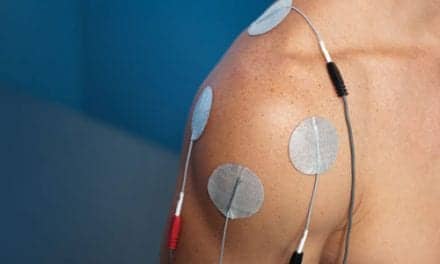A well-executed integration of Pilates can widen a facility’s reach across the rehab spectrum and boost revenue.
You are running a successful physical therapy clinic and feel like it is time to expand and offer additional services. A great way to do this is to tap into the growing trend of multifocal facilities that allow patients to continue their post-rehabilitation care in the same place. More specifically, adding Pilates to your clinic will allow you to offer a versatile system of movement that can be used on a variety of people anywhere on the rehab spectrum. The looming question then becomes, “How to do that?” This article will cover a few of the major factors to consider if adding Pilates instruction to your facility is a priority.
PINPOINTING A CLIENT BASE AND SERVICES
One of the first things to consider is whether this is an appropriate move for your facility. Is there a client base to which you can market these services? The client base can be both internal and external. Internal customers can be existing patients and staff while external customers are those in the community who will be new to your facility. Although Pilates is beneficial for many different types of patients, a good core of orthopedic patients who are currently receiving therapeutic exercise and/or are looking to move into post-rehabilitation fitness can lay a good base to start. They will be a ready-made source of clientele that has been in your facility and with whom you have already established a rapport. With the external prospective customers, you should determine if the age and income demographic in your community fits with the slate of services you plan to offer.
Deciding what services to offer goes hand-in-hand with determining where the client base will come from, and there are a variety of options from which to choose. Some options are one-on-one sessions that focus on specific post-rehabilitation concerns, or semiprivate and trio sessions where the instructor works with two to three people. Semiprivates and trios offer a more affordable solution for your clients than privates would, but still allow more personal attention than a group class. There are also group Mat classes, group equipment classes on the Reformer or Pilates Chair, or even classes that incorporate multiple pieces of equipment. Creating a tiered structure to your pricing through a variety of services can make it accessible for more people, creating a more consistent revenue stream.
Resolving the question about which services and packages to offer the practice’s clientele opens the door for other important considerations, such as the following:
• What type of equipment to purchase?
The equipment you buy is directly dependent on the services you want to offer. If you are just going to do Mat classes, then all you really need are mats. If you want to offer group equipment classes, then you will need the large equipment as well as necessary accessories. This difference can spread the range of the equipment budget from hundreds to many thousands of dollars. For one-on-one instruction, a Reformer, Trapeze Table, and the Pilates Chair are a great combination of equipment to have. Between these three pieces, there are thousands of movements and combinations you can do that progress from being isolation exercises in gravity neutral to functional exercises in gravity to exercises that will challenge elite athletes. For group equipment classes, Reformer classes are the most popular, followed by Pilates Chair classes. The amount of equipment to purchase will depend on space and desired class size. More equipment can be purchased if necessary, and the main concern is to avoid overbuying equipment and having things that are not used or needed.
• What type of space will be required?
If only Pilates Mat classes will be offered, floor space is all that is needed and this space can be multipurpose. If there will be equipment used for classes, then there must be adequate space for the equipment as well as for people to use the equipment. Of the pieces of large Pilates equipment, the Reformer is one of the most versatile, and accommodates a wide range of bodies and skill levels. Considering that, a Reformer can be anywhere from six to eight feet long and two to three feet wide. To have multiple Reformers in a room for group class use, along with the space necessary between them for people to move, expands the footprint of the Reformer and the dimension of the required area. Unfortunately, Pilates equipment does take up a significant amount of space. However, different manufacturers offer various movement and storage options for their equipment, allowing your space to still be used for other things.
• How to staff the new services?
This depends on the services and equipment you will have. If you have staff who are already in house and are interested in teaching, they will need to be trained. It is recommended to invest in a quality training program that has a rehabilitation-specific track to make the training applicable to the different populations you will be serving. A quality training program can take months to complete so this should be considered before the planned start of the Pilates program. The focus on a Pilates rehabilitation-specific program geared toward professionals in this field will allow your therapist to use the Pilates equipment in treatment as well as to teach classes. If there will be a focus on group fitness classes in addition to or instead of one-on-one instruction, then another option is to find trained professionals to bring in to teach Pilates. Providing the space and equipment and hiring outside instructors as contractors can quickly solve the staffing issue. A concern with this is to properly screen potential instructors to make sure their qualifications, teaching style, and willingness to collaborate with rehabilitation staff meet the standard you are looking to maintain.
MARKETING, MAPPED OUT
Once the program structure, space, staff, and equipment plan for the Pilates program are established, the final decision is to determine how to market Pilates to make it a successful part of the business. Marketing to the internal and prospective external customers successfully can kick start the new program and keep it busy. The first group to market to is your staff. Once you have a trained instructor on staff, setting up in-services to educate your staff about what Pilates is and how it can be used with your patient population will help the staff integrate the new program. Also, it is a good idea to get your staff together and create a consistent message explaining to your patients that you are now offering a way for them to continue their rehabilitation in a place they trust, under the supervision of a trained professional. The next group is patients who are already in your care. With existing patients, therapists can begin incorporating the Pilates exercises in a one-on-one setting during treatment sessions to introduce the concept. At the same time, classes that cater to the needs of your patient population can be created. If you have a good number of spine patients, creating a low back safety/strengthening class is a good idea, or if you have more athletes or runners, creating a class that focuses on rotational strengthening for sports or a running conditioning Pilates class is a way to pull patients into a Pilates program.
Advertising to the selected demographic in your community is necessary if you want to get people who are not familiar with your facility into your program. Print, radio, and television advertising can be effective, but is also expensive. Hosting open houses where people from the community are invited in to see your facility and possibly take free classes is a less expensive alternative. Another option is to partner with other businesses in your area that service the same demographic you are targeting. These are basic ideas. Ultimately, the marketing approach that is best for a clinic will depend on the area in which the clinic is located, and the groups of people the clinic is trying to reach.
The addition of a Pilates program into a physical therapy clinic is a great way to integrate two long-standing practices to benefit staff with continuing education, and patients with a wider variety of treatment options. With a little planning and good execution, it can also be a great way to benefit the community at large through exposure to quality care while generating additional revenue for the facility. RM
Dane Burke, PT, ATC, has been practicing physical therapy and teaching Pilates for more than 10 years in Buffalo, NY. He is certified through the Pilates Method Alliance and Polestar Education and currently is a teaching faculty member for Balanced Body. For more information, contact [email protected].





